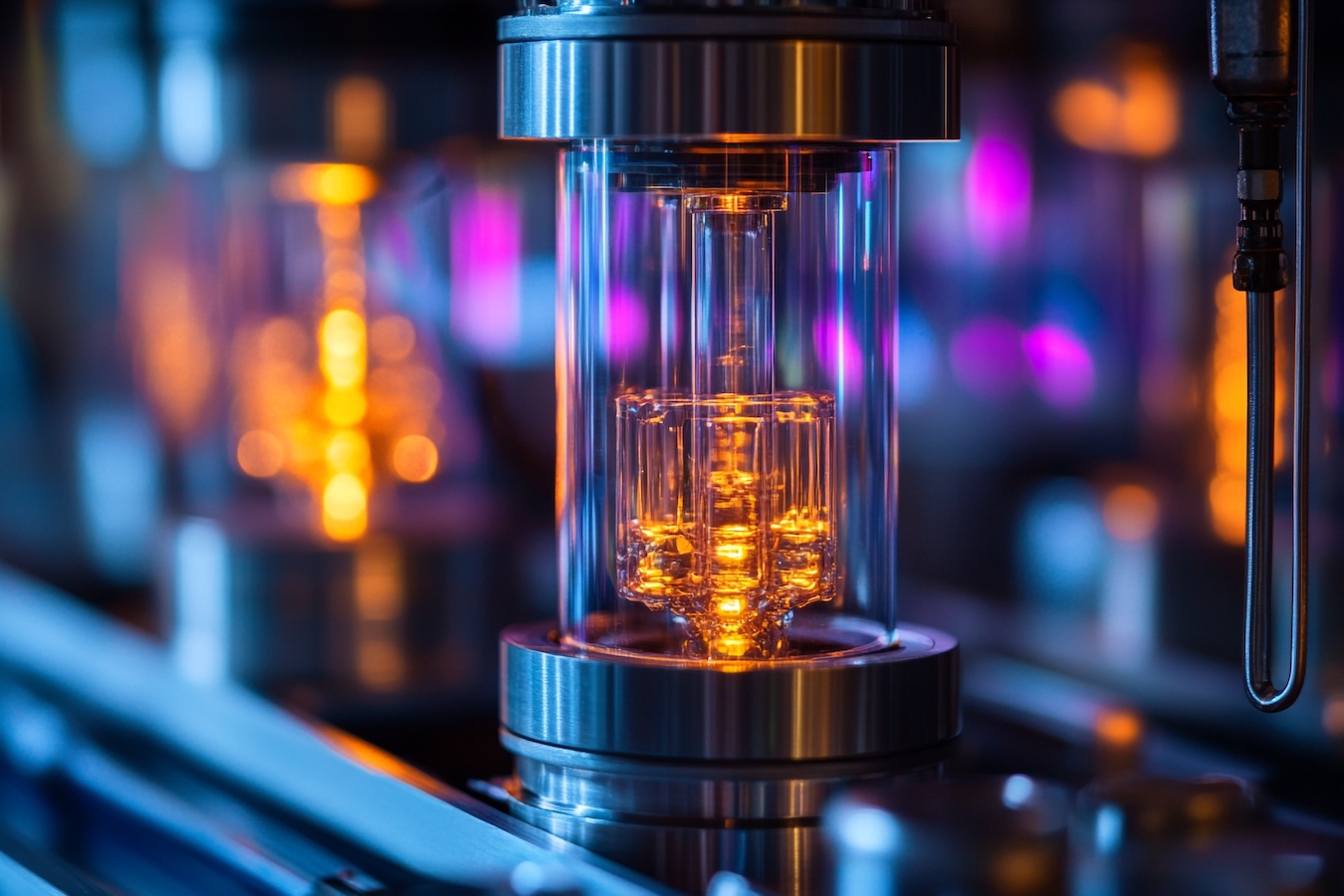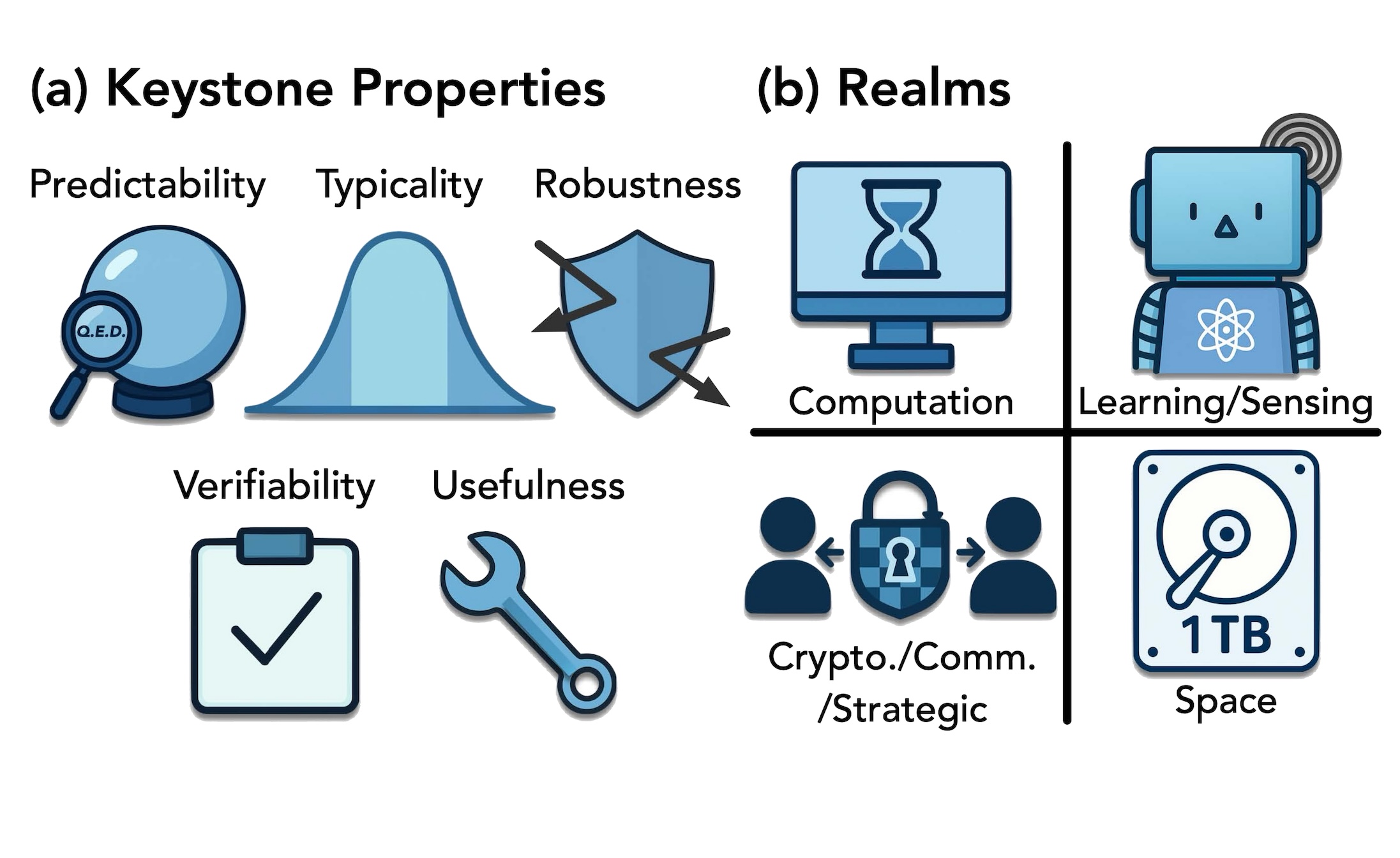The goal of the quantum computing community has been to develop what are called “universal quantum computers.” These devices are all intended to run the same standard algorithms, such as Grover’s Algorithm, Quantum Phase Estimation (QPE), and Shor’s Factoring Algorithm. They’re compared, generally, on factors related to their ability to do so qualitatively: coherence times, gate execution speeds, and single-qubit and multi-qubit operation errors.
But not every quantum computer architecture is the same. Without getting technical, a quantum computer hardware architecture based on nitrogen vacancy centers can fit within a standard server rack in a datacenter, while an ion trap architecture requires an estimated 200 ft2 of floor space. Even within the same modality, the quantum computer design can vary substantially. For example, cat qubits are superconducting qubits, but they’re resilient to one of the two major types of errors. Furthermore, even the term “neutral atom” can refer to different species of atoms.
Among all the modalities currently in development and being researched, a quantum computer architecture based on neutral atoms offers a few key advantages. Some of these advantages are shared with other modalities. However, no other modality shares all of the following advantages:
- Perfection. When neutral atoms are used as qubits, they are all naturally perfect and identical. Because they are not fabricated, there can be no flaws in their designs.
- Room temperature. Neutral-atom computers don't require cryogenic cooling and operate at room temperature.
- Connectivity. Some architectures limit qubit interactions to their nearest neighbors. Neutral atom architectures, in contrast, allow every qubit to be connected to every other qubit.
- Scalability. Although testing is currently ongoing with relatively few atoms, the architecture naturally allows scaling to very large numbers of atoms, especially relative to other modalities.
- Leadership. At the time this article is being published, and following the immediately previous point, QuEra’s “Aquila” is currently the largest publicly-available quantum computer in the world.
- Flexibility. A range of geometries has been demonstrated in both two-dimensional and three-dimensional arrays of individual atoms.
- Precision. Besides the positioning of the atoms, the operations that are executed on the atoms can be precisely controlled, such as the shapes and the durations of the laser pulses.
- Coherence. Relative to other qubit modalities, neutral atoms are able to retain quantum information for a very long time.
- Wireless. Superconducting architectures are famous for photos showing engineers connecting jungles of wires, but neutral atoms are suspended in vacuums using optical tweezers.
- Control. The use of optical tweezers contributes to the relative-ease at which atom counts can be scaled up, as well as to the flexibility in which they can be geometrically arranged.
- Tested. Although the application is different, the use of atoms in clocks goes back many decades. Research involving atoms is neither new nor speculative.
- Compact. Because the atoms are not repelled by electrical charges, they can be tightly packed into arrays within millionths of meters (microns) of each other.
Having briefly mentioned atomic clocks, it is worth noting that neutral atoms have applications beyond quantum computing. For another example, neutral atoms are used in various quantum sensors, such as portable, highly-sensitive gravimeters.
Benefits of a Neutral Atom Architecture
The advantages of using neutral atoms are not just nice to have. In fact, qualitative benefits can be derived from them. Diving a little deeper into these advantages, some of the potential benefits of neutral atom architectures include:
- Fidelity. Atoms don’t have defects, they don’t have wires, and they don’t fail. Your 256 atoms are always going to be perfectly functional.
- Ease. In digital quantum computing, the connectivity of the qubits matters. The all-to-all connectivity of neutral atoms greatly simplifies circuit design for algorithm developers.
- Quantity. The largest publicly-available quantum computer is the 256-atom “Aquila.” It packs in hundreds of atoms now, but the same architecture can actually pack in thousands of atoms.
- Dynamic. Not only do neutral atoms have flexibility in their original arrays, a process called “qubit shuttling” allows the atoms to be individually moved around during the computation.
- Stamina. The relatively-long lifetimes of neutral atom qubits, their coherence, allows more operations to be performed and, thus, for deeper circuits to be executed.
- Simplicity. Compared to all the wiring required by some architectures, hundreds of neutral atoms can be controlled with just a few lasers.
- Memory. While some architectures require the development of quantum memories, or QRAM, neutral atoms can already implement a version by simply moving relevant atoms off to the side.
- Natural. The Rydberg states of atoms naturally solve classically-intractable Maximum Independent Set (MIS) and Maximum Clique problems.
- Easy. While many architectures are discussed in terms of how challenging they are to engineer, the process of trapping and moving atoms is well understood.
- Efficient. Neutral atom quantum computers are known to consume far less energy than high performance computers (HPC), thus saving both energy costs and the environment.
These benefits help to illustrate why neutral atom quantum computing is gaining in popularity. The availability of the 256-atom “Aquila” device was recently extended – almost quintuple its initial availability – in response to public demand.
Want to receive these insights every month?
Join our mailing list
Sign up here
Quantum Computer Architecture Examples
The components of quantum computing vary wildly depending on what is being used as a qubit. For that matter, they can vary quite a bit using the same qubit. At a very high level, a sampling of the variation out there includes:
- Neutral atoms, suspended in a vacuum chamber using optical tweezers. The species of atoms vary, as well as whether they are geometrically arranged in arrays of two or three dimensions.
- Superconducting, which is electronic circuits within dilution refrigerators. The circuits might be in one layer or multiple layers. Wires may come in from the sides or from the top. And, more.
- Ions, suspended in a vacuum chamber electromagnetically. The species of atoms vary, and the arrangement of the atoms is predefined.
- Photonics, which includes photon sources, integrated circuits, and photon detectors. Cryogenics is usually used on the detector side, and is sometimes used on the source side.
- Spin qubits, which involves single electrons trapped within small enclosures called quantum dots. In principle, wafers can be fabricated that contain huge numbers of qubits.
- Nitrogen vacancy centers, with which a qubit involves removing two carbon atoms from a synthetic diamond lattice, and replacing them with a nitrogen atom and a vacancy.
Other architectures are in development, and may vary even more wildly than these. Electron traps, for example, combine the vacuum chambers of ion traps with the microwave controls and dilution refrigeration of superconducting architectures. But then there are topological qubits, which don’t closely resemble any of the other modalities. Furthermore, research into other novel modalities may be as yet unpublished.
An SDxCentral article titled “Inside quantum computing architecture,” despite its generic title, provides further detail specifically into superconducting architectures. Because they leverage existing knowledge of semiconductor fabrication, this architecture is currently the most common. It’s not without its challenges, however. As already noted, despite this semiconductor experience, the largest publicly-available quantum computer in the world is the 256-atom “Aquila.” Also, the article mentions the glass enclosures of superconducting architectures. These glass enclosures, as well as the space surrounding these glass enclosures and the space for the control systems, adds up to a significant footprint. In some cases, an entire room with a side closet is dedicated to a single superconducting quantum computer.
An article by Red Hat titled “An introduction to quantum computing architecture” compares in-house quantum computers to the early days of classical computing. However, any discussion of quantum computing infrastructure should include all the technology to make it cloud accessible. Whether or not they are publicly-accessible, many quantum computers are cloud-accessible. In our article titled “Exploring the Advantages of Cloud-Based Quantum Computing,” we go into detail as to why that is the case.
Finally, our article titled “Quantum Computer Technology: Architecture, Advantages and Disadvantages” further explores the advantages and disadvantages of quantum computing technology. It differs from this article in that its more generic, whereas this article delves more specifically into neutral atom architectures.
For technical insights into neutral atom architectures, be sure to check out the learning resources for the Bloqade and Bloqade-Python libraries. Because operation is currently analog, soon to be hybrid digital-analog, these resources go into detail about atom positioning, pulse shapes and durations, and so forth. These resources include recordings of training sessions, during which an expert instructor explains the operations of the device and answers trainee questions.



-compressed.jpg)
